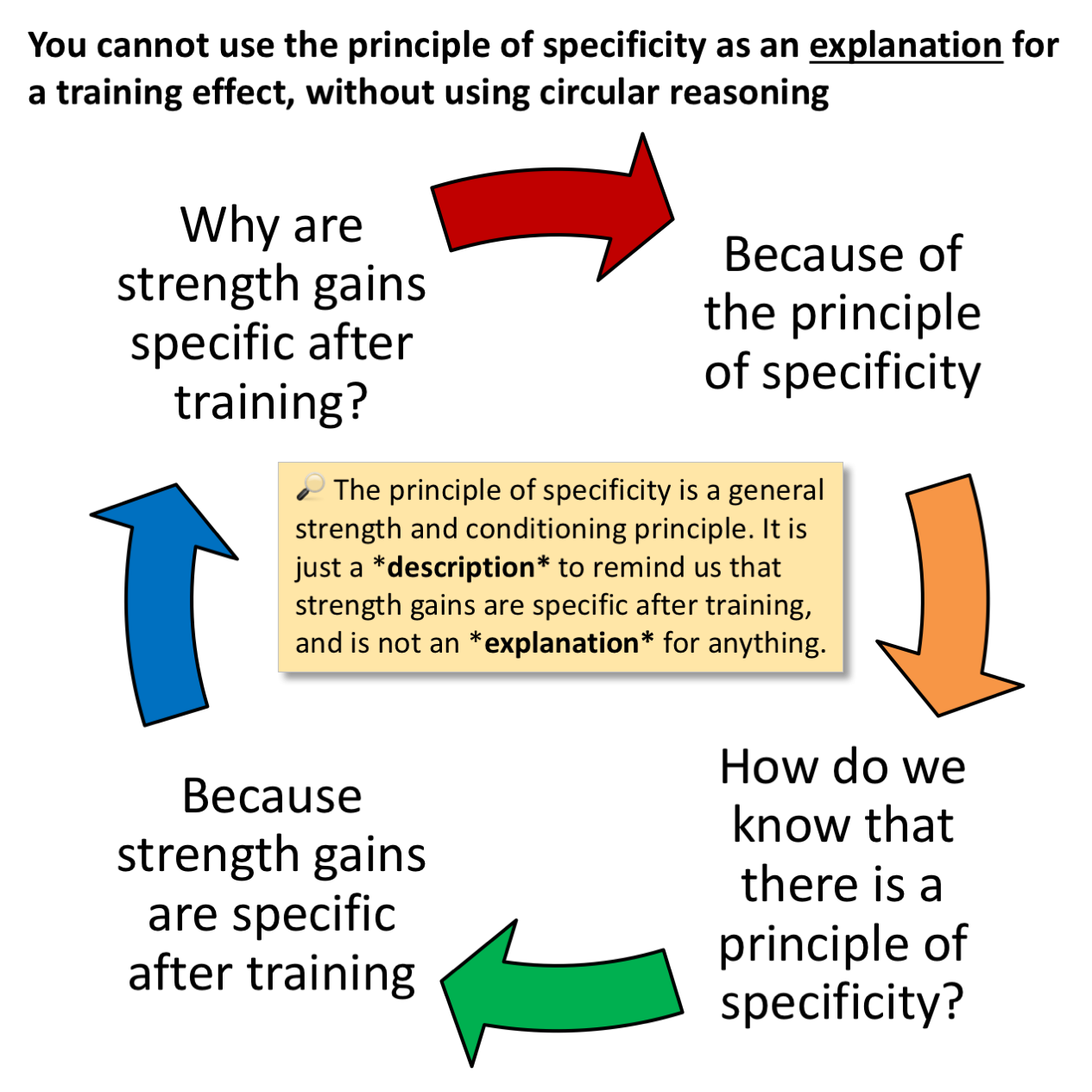Everyone who takes any kind of formal education in exercise science is taught about the Specific Adaptation to Imposed Demand (SAID) or ?specificity? principle.
In strength training, the specificity principle describes how strength gains are very often quite specific to the type of training we perform.
In other words, it says that strength gains are greatest when tested with the same characteristics as used in the training program.
This sounds fairly simple.
And yet, people interpret it in different ways.
It is just the specificity principle!
Over the last couple of years, I have been writing detailed articles and posting up studies that clarify the different ways in which strength training produces quite specific adaptations, depending on the way in which the training program is set up.
When I post up this kind of information, of the most common responses I receive from online commentators is that ?this is just the specificity principle.?
They clearly believe that by saying this, they are telling me that:
- I should never investigate further when reports show strength gains that are specific after strength training, and that
- they are somehow explaining the mechanism by which these specific strength gains occur, and thereby clarifying the effect to everyone?s satisfaction.
They are mistaken, and I think this is because they are confused about what ?principle? actually means and achieves this context.
What does ?principle? mean?
Without trying to take into consideration every possible way in which a word can be used, there are basically two ways in which the term ?principle? gets used in exercise science.
Firstly, there is the fundamental principle, which is a universally applicable or nearly universally applicable phenomenon.
A good example of this is Henneman?s size principle, which states that motor units are always recruited in size order from low-threshold to high-threshold, in response to the need to produce or maintain muscle force. Despite many attempts to disprove the size principle, it has held true for decades, and the most recent research indicates that the finding is extremely robust, even during eccentric contractions.
When we are dealing with fundamental principles, we don?t need to be too curious if they are followed. In contrast, we should be be *extremely* curious when they are violated (although we should probably assume that it is our measuring equipment that is wrong, initially).
Secondly, there are general principles.
In strength and conditioning, we only have a few general principles, which are: progressive overload, individuality, specificity, and variation. These are essentially guidelines that we follow in order to devise strength training programs.
Importantly, general principles are observations that cannot always be relied upon (although they very often can). We should therefore be curious about when they are followed, and also when they are violated, so that we can understand them better.
The reason that general principles are not always followed is because they are produced by a range of underlying factors, or mechanisms.
For example, while it is a principle that different individuals will respond to the same strength training program in different ways, there are tens (if not hundreds) of ways in which two people can differ from each other. So although the principle of individuality is a valid observation, it does not explain anything.
On the other hand, differences in prevailing muscle fiber type or baseline strength levels might, and this shows that we need to drop down a level from general principles to find a mechanism.
And this is the same for the principle of specificity.
While it generally holds true, if we want to understand it, we need to drop down a level to find the mechanism or mechanisms that apply in each individual case.
What does the ?specificity principle? mean?
The expression the ?specificity principle? is a description that serves to remind us to expect that strength gains will be specific to the type of strength training we perform.
Researchers coined the expression because they observed experimentally that this happened more often than not.
If we turn this around, and think of the principle of specificity as an explanation for why strength gains are specific, we end up with a circular reference, like this:

This means that even with the specificity principle in place, we still need to determine the mechanisms by which strength is specific.
What is the takeaway?
The specificity principle is a principle in the same way that basic strength and conditioning principles like progressive overload, individuality, and variation are principles.
The specificity principle is a general guideline that serves to remind us of a general observation that applies most of the time, but not all the time. It is not an explanation for why strength is specific. We need to look deeper if we want to understand that.


